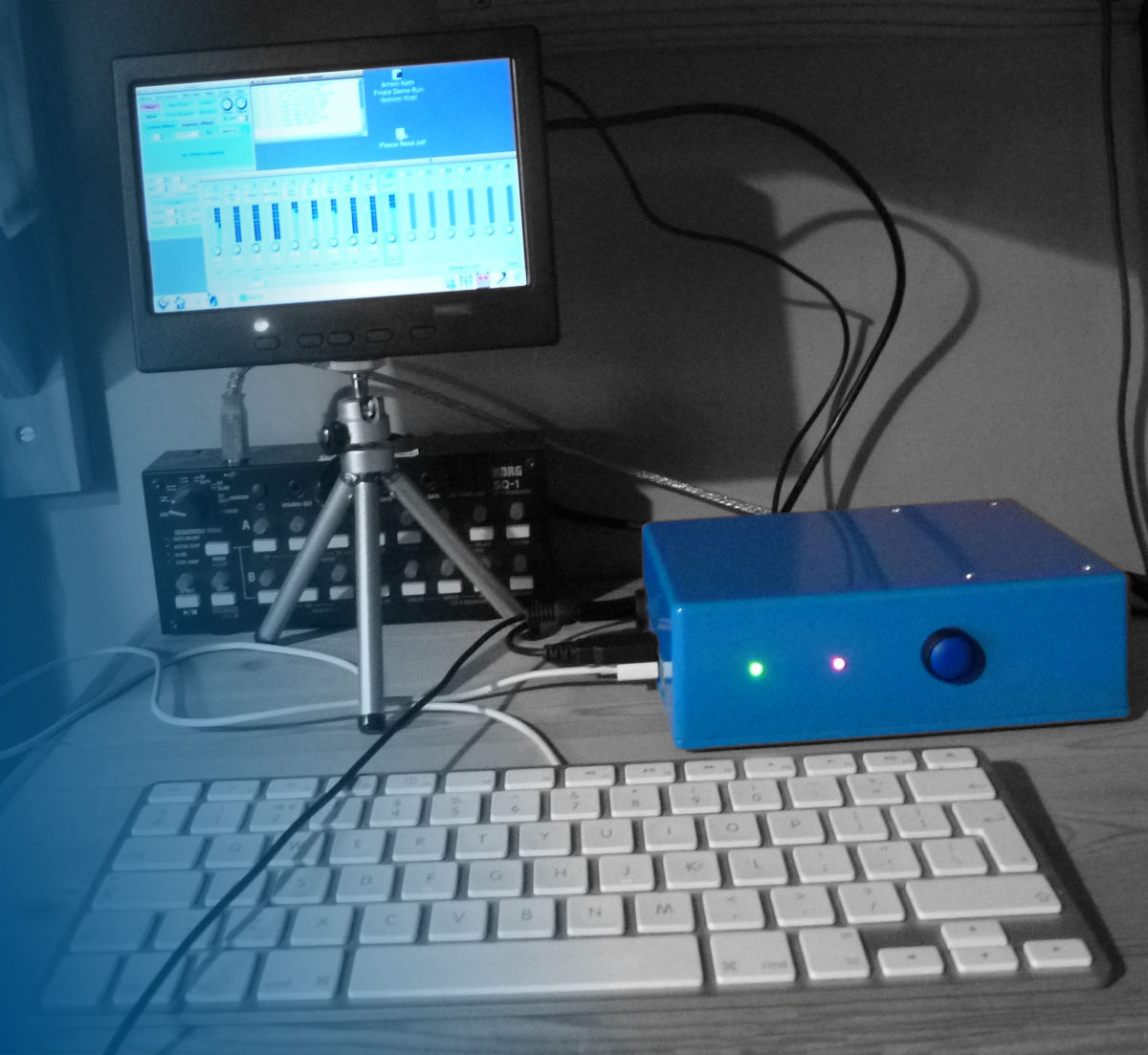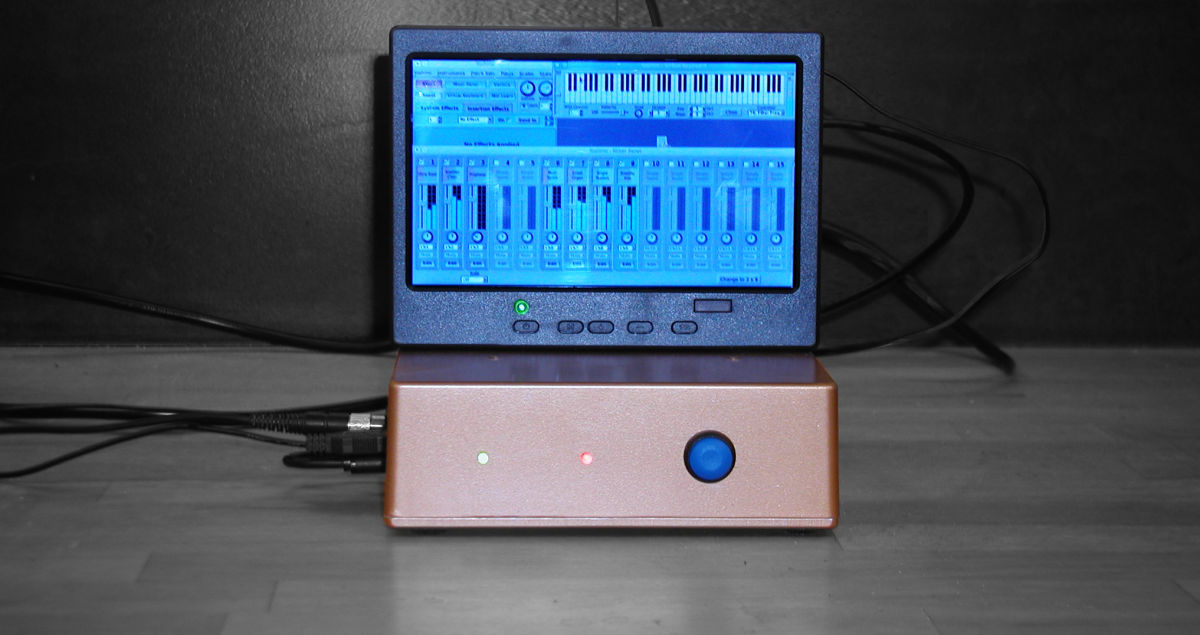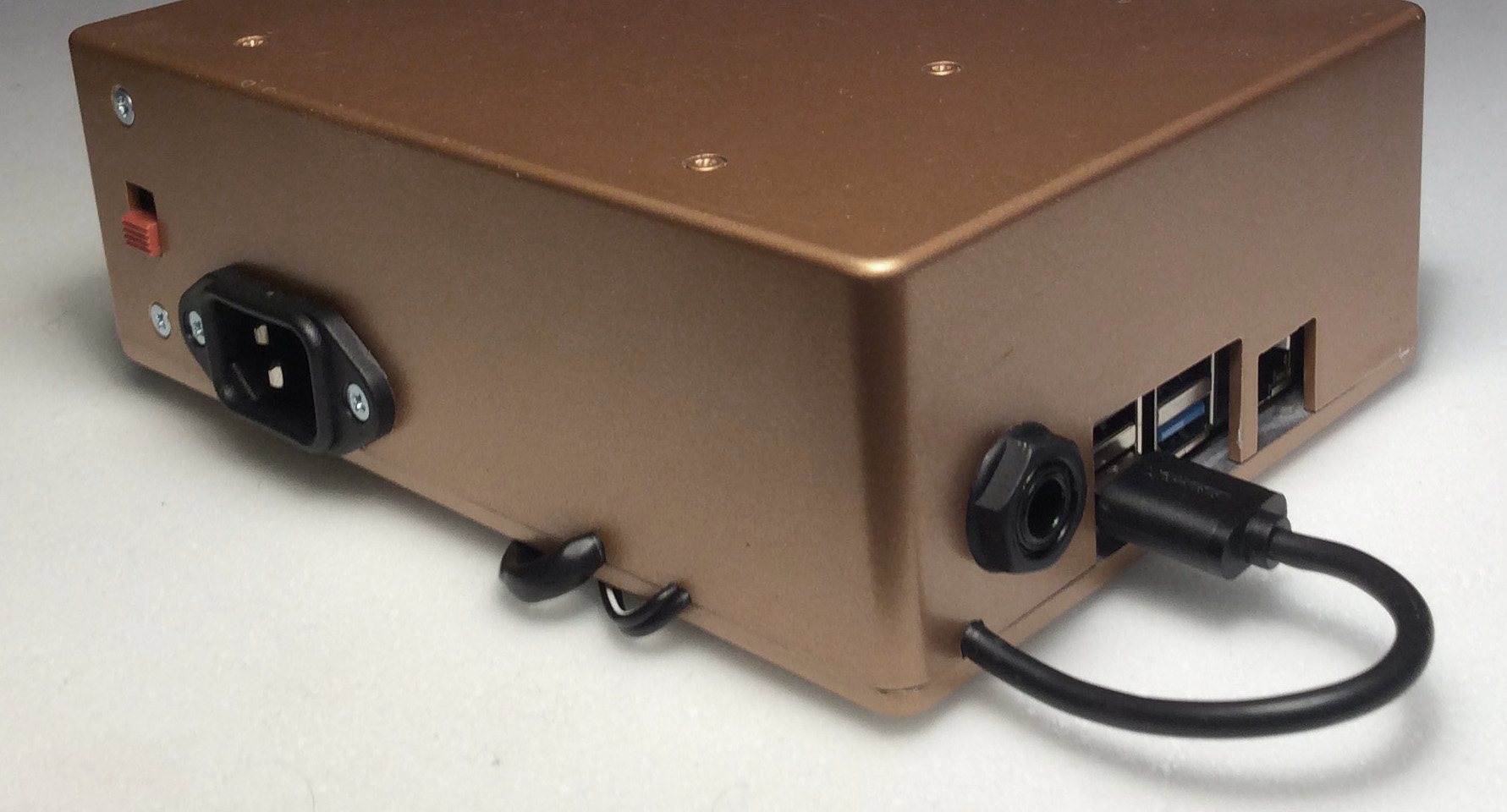Yoshimi Pi
- Software synth in a box
- Highly portable
- Plug and play
- Custom made
- Portable 7" display
Eddy Deegan
Full review...

Introducing Yoshimi Pi
Yoshimi Pi is the hardware incarnation of the software synth Yoshimi, running on a Raspberry Pi 4 in a rugged metal case with a built-in PSU and line level audio output. It comes with a discrete 7” HD display. Each unit is hand built and can be uniquely customized on request.
Designed to be ‘plug and play’ it can be used right away with only a MIDI keyboard and an active speaker or headphones. Like most other synths, it can be used with any DAW, or class-compliant controllers supporting MIDI over USB.
Everything is powered by a single standard IEC power cable, and the display uses captive power and HDMI leads that are just long enough for comfort, so there is no risk of tangles or loss of the interconnect leads. A single button switches the power on and off, with two LED indicators to show when the unit is powered, and when fully booted.
With dimensions of 170x120x55mm, Yoshimi Pi is extremely portable and robust enough for gigging use. For integrating into a studio, Yoshimi Pi can connect to any HDMI monitor using a standard extension to the captive video lead instead of the supplied 7” display.
Yoshimi itself provides extensive MIDI controls, including many NRPNs (Non Registered Parameter Numbers). Almost all of these controls can be MIDI-learned. Up to 400 such events can be defined for any session. All 16 MIDI channels are independently available with up to 60 note polyphony per channel, or with the SOLO feature you can seamlessly switch channel 1 between patches, using designated CC messages. Complete setups can be saved and automatically restored next time the unit is switched on, making it perfectly practical to use while travelling.
Yoshimi has a context based system of windows which works very well with the included monitor, exposing only what you need to see at any one time. Using just a USB mouse it is possible to select instrument patches from bank windows, and use/modify various dynamic effects.
You can also connect a USB keyboard in order to interact fully with the GUI. This enables you to dive deeper in order to access the sound engines (of which there are three different types), edit or create your own custom patches, apply FX and much, much more besides, so it can be run as a single sound source or integrated with oher synths.
All of this put together provides great flexibility – especially for live performances.

Specifications
- Raspberry Pi 4 processor
- Yoshimi Soft Synth V2.0.1 or later (upgradable)
- Various utility applications
- 2 USB 2.0 ports (one captured for internal sound)
- 2 USB 3.0 ports
- 1/4in TRS socket providing 16bit stereo audio
- Standard HDMI port (up to 4kp60 supported)
- Gigabit Ethernet
- 12V DC out @ 2A (for supplied monitor or alternatives)
- 3pin IEC connector for 90-250V AC/DC supply
- Operating temperature: 0 – 50 degrees C ambient
- Meets or exceeds recognised safety standards

All connections out of the way to the rear or left hand side.
My Yoshimi Pi has already featured on a recent project, and as a sound designer I'm also looking forward to exploring more of the possibilitits of its three synth engines, all of which can be utilised within a single patch if required. SUBsynth provides a host of more traditional synth sounds using the well-known subtractive synthesis featured on so many other synths, but for my money the ADDsynth engine sets this synth apart for its more unusual additive synthesis (perfect for building sounds such as pipe/electronic organs and other more subtle sounds from the ground up), while the somewhat unique PADsynth relies on wavetable synthesis for even more radical evolving sounds. Other goodies of note include an expressive formant filter for simulating vocal vowels, morphing, and extensive real-time performance options.
Supplied with 710 ready-built instruments, you can run Yoshimi Pi in monophonic, polyphonic, or multi-timbral modes (up to sixteen simultaneous channels), and it also includes a selection of quality audio effects to add the final polish to your creations. I was impressed by how easy it was to use (you'll be up and running within seconds, and you don't need to know anything about Linux either). Overall, this little synth is far more versatile than most other softsynths, offers great audio quality, and is excellent value for money. That's a winning combination in my book!
Contact
This is a small, one-man operation, so I can't always take orders. Depending on suppliers, build time is usually 2 to 3 weeks. If you are interested in getting your own Yoshimi Pi, or have any questions about it, you can contact me on:
